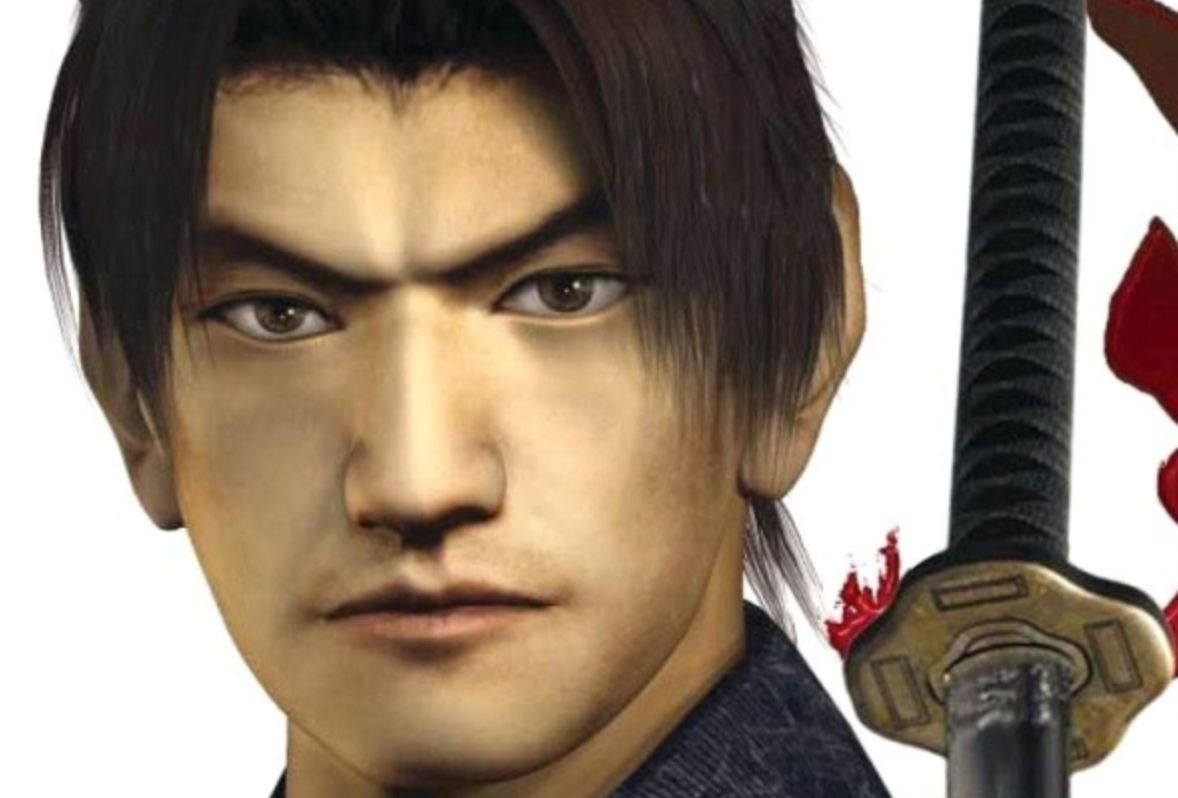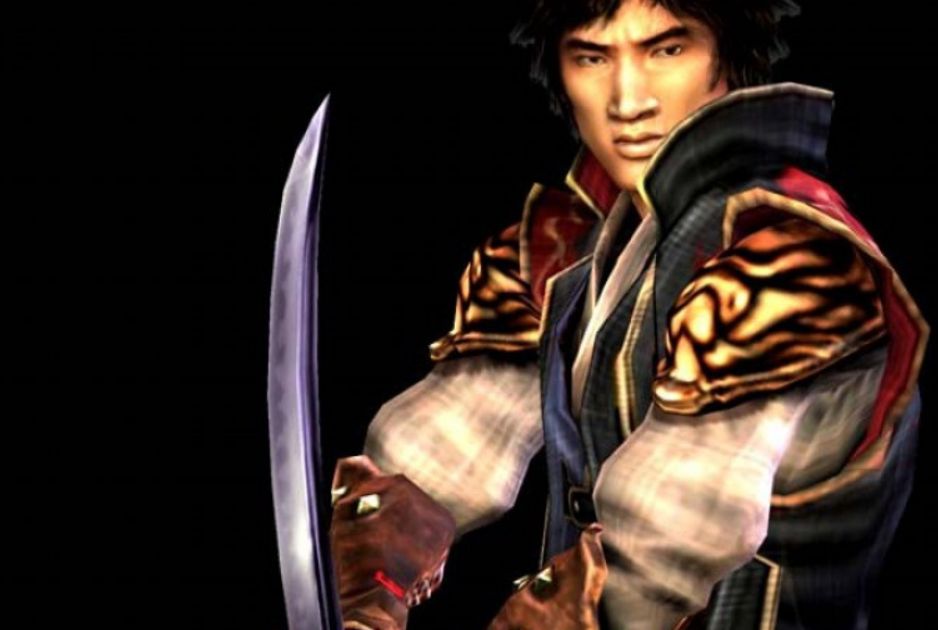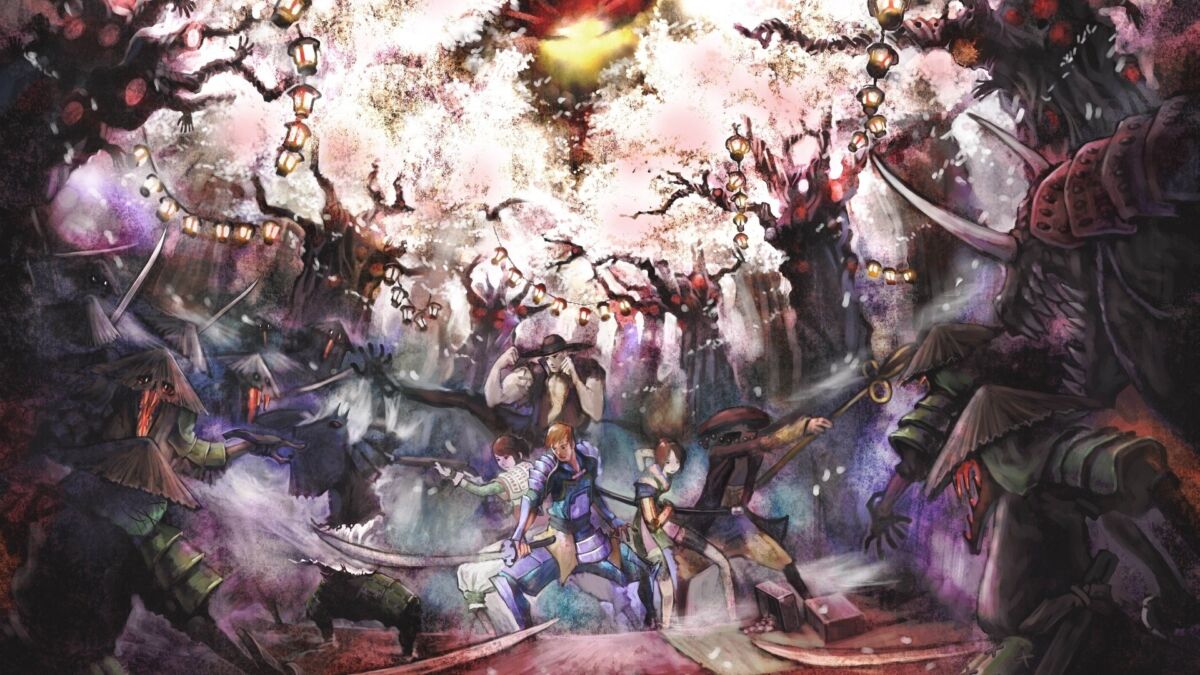The PS2 was the console that arguably pioneered the hack and slash and character action genres for the generations to come, with massive hits like Devil May Cry, God Hand, God of War, Prince of Persia and more. Arguably though, and in the case of one of the games mentioned above, factually, the whole genre was pioneered by one game: Onimusha.
With a whopping four games released on one generation of consoles, Onimusha made a huge impact on the gaming scene when it first debuted, but like most games we feature in the series, it seemed to disappear off the face of the earth not long afterwards. Today, we’re asking the question: will we ever see a new Onimusha game?
The History of Onimusha

The development of the first Onimusha game, particularly in its inception, is quite the famous story already, at least in terms of the legacy it spawned. The concept for Onimusha: Warlords emerged in 1997, as it was based on the idea of Capcom designer Yoshiki Okamoto, who wanted to create a Sengoku era Resident Evil game, complete with a “ninja house” filled with various booby traps and gimmicks. Players would fight monsters and demons using katanas and shuriken rather than guns and grenades.
In Okamoto’s vision of the game, Onimusha: Warlords was planned for the Nintendo 64DD, the disk drive version of Nintendo’s famous console. However, development began on the original PlayStation, before then being switched once again to the PS2. The original PlayStation version was never released, but gameplay trailers for that initial version are available to watch online.
In an interview with PSX Extreme, legendary developer and Warlords producer Keiji Inafune clarified the game’s development process, stating: “Onimusha was not originally developed for N64. It was originally developed for PS1. I wanted to release this game on the best system available. When PS2 was announced, I was very excited about it and shifted the project to PS2.”
The full game launched in 2001, with a plot focused around real-life figure Nobunaga Oda. You play as the warrior Samanosuke, who is summoned to Inabayama Castle to try and prevent some evil-doers from reviving a villainous Nobunaga. Also, there’s a bunch of demons running around the place, so you’re given some magical assistance to ensure your head doesn’t get stomped.
Fighting these demons is where the more famous development story comes from. Initially, a bug with the melee combat meant that demons were being juggled by attacks. It didn’t fit the style of game Onimusha was, but the designers found it to be entertaining and tried it in the then prototype for Resident Evil 4. That game would go on to become Devil May Cry, with Hideki Kamiya himself implementing the glitch that became an intended mechanic. Given the other famous story about the combos in Street Fighter being an accident, Capcom have decent luck when it comes to just fluking their way into fantastic game mechanics.
Digression aside, Onimusha: Warlords would prove to be a success for Capcom, selling over 2 million copies worldwide and over a million alone in Japan. Critically, Onimusha: Warlords did pretty well for itself too, earning a Metacritic score of 86. That level of success as an early PS2 title practically warranted a sequel, but it was also ported to the original Xbox in 2002 as Genma Onimusha, which included enhancements to pretty much every aspect of the game, including new areas, attacks and a new boss fight.
Onimusha 2: Samurai’s Destiny launched in 2002, which is a quick turnaround for a sequel, but as we learned from the Dino Crisis deep dive, quick turnarounds were common for Capcom back then. Still, it also helped that Capcom were developing the sequel at the same time as the original game, meaning Capcom had complete faith in the game’s ability to succeed before it even launched. Capcom reportedly has enough faith that Onimusha was planned to be a trilogy, according to Keiji Inafune when speaking to 1up.com.

That doesn’t mean the sequel wasn’t a bold step for the series. While retaining a lot of the same core gameplay, Samurai’s Destiny featured a brand new protagonist in the form of Jubei Yagyu, a samurai with oni heritage who goes on an adventure across feudal Japan to stop Nobunaga’s potential reign of terror. Along the way, you meet other warriors with whom you can interact and form relationships with, which is critical to ensuring they don’t abandon you when the demons hit the fan. It’s a bit like Mass Effect before Mass Effect, only with ninjas and samurai.
This focus on dramatic storytelling over pure action was a conscious decision by the developers, and one that ultimately paid off, as Onimusha 2 ended up being just as successful as the original game. Samurai’s Destiny earned an 84 on Metacritic, and in the same listing as the first Onimusha linked above, it’s reported that the second game managed to hit 2 million copies, although just barely. However, it’s been noted that reception to the sequel in Europe was muted at best, meaning that the third game was altered in order to better appeal to European games. How do you do that?
Bring in The Professional.
Jean Reno himself was cast in Onimusha 3: Demon’s Siege as Jacques Blanc, a present day police officer who switches places with the original game’s protagonist Samanosuke, with Jacques sent to Japan while Samanosuke finds himself in Paris. Side note: Jacques Blanc seems like the most stereotypical French name you could come up with, but that’s a whole other basket of baguettes.
In the same interview with 1up.com, Keiji Inafune goes into detail about the decision to set the game in Paris: “We were originally thinking of either New York or Paris. We wanted a contrast between ancient Japan and another city. The team thought, well, New York would be cool, here’s this samurai running through New York, surrounded by skyscrapers.
“But when we looked at the games that were out at the time, very few games used a European backdrop. You see New York in a lot of different games, so we wanted to take the road less traveled. Also, Onimusha 2 sold the worst in Europe. We felt like that’s where we lost the war, so it was the key place we wanted to focus the third on.”
Jean Reno’s role in the game was more than just facial scan and voice over though, as Capcom brought him in to do motion capture work for the cutscenes and other animations. Motion capture and CG movies were one of the biggest elements during the development of Onimusha 3, with the team even bringing on acclaimed martial artist Donnie Yen to assist with the game’s development.

Inafune spoke more about the desire to include Jean Reno in the development process, stating: “When you’re making a game, you’re making something from nothing. In order to get even your own team to believe in an idea, that this fake world you’re creating is real, you need the people that are playing the part to be there. Getting Reno to do the motion capture made the game all the more tangible.
“We also wanted something to show the fans. Here’s Jean Reno, he’s actually doing the motion capture. We didn’t have time to do every single step, of course, but we did many of his basic movements through the motion capture. We didn’t just want to borrow his name. We wanted him to be a part of the team, the process of making a game. This was a gesture of respect to Reno, as an actor, to invite him into the game.”
While Onimusha 3 was designed to appeal more to Western gamers, the sales outside of Japan didn’t quite stack up, with the game debuting at number 10 in the US charts when it launched. Onimusha 3 was by no means a failure though, as it managed to accrue lifetime sales of 1.52 million, and achieved a Metacritic score of 85. Onimusha 3 would even inspire others, with Shinji Mikami adopting an over the shoulder camera in RE4 in response to playing Onimusha 3 (which didn’t seem like a compliment).
The graphical engine would even go on to become the basis for the criminally underrated Shadow of Rome, with Yoshinori Ono remarking in an interview with IGN about how Onimusha 3 pushed the PS2’s capabilities: “The graphics engine for Onimusha 3 pushed the PS2 hardware to its limits. So for Shadow of Rome, we challenged ourselves to maintain as much of the Onimusha 3 quality, while injecting the dynamics of Shadow of Rome’s action battle and stealth portions where the user can move the camera around at will. Our CG designers in Studio 2 really know the engine inside and out. So we took this engine that pushes the PS2 hardware to its limits and planned a completely different game around it.”
Where’s Onimusha At Now?

Re-releases and spin-offs aside, the last main entry for the Onimusha series was Dawn of Dreams in 2006, which saw the series return to Japan fully – no trips to the future this time. Despite being billed as a trilogy, the first three Onimusha games were designed to close out the Nobunaga saga of the series, with a new villain and protagonist introduced in this fourth entry. The numerous fan requests for a new game were also hard to ignore. The game also opted for a more action oriented gameplay style, changing the fixed camera perspective to a controllable camera that defaulted to behind the player character, Soki.
Rather than just opting to create a new game in the series, Capcom saw Dawn of Dreams as a chance to make a new start for the series. When speaking to Eurogamer in 2006, Yoshinori Ono said: “We wanted to overhaul the gameplay and make a brand new game. So rather than just extending the Onimusha trilogy, we came up with a brand new Onimusha franchise. That’s why there’s no number in the title. We didn’t want to use [the name] Onimusha 4, because we’ve changed the game model completely and this is a new chapter… A new dawn.”
Unfortunately, that new chapter would just turn out to be an epilogue for the game series, as Onimusha: Dawn of Dreams failed to become a commercial success, even despite the generally positive reviews the game received. In that year’s fiscal reports, Capcom singled out Dawn of Dreams alongside other games like Beatdown: Fists of Vengeance (which was a trash tier game, in fairness) as games that underperformed and struggled. It is possible that this could have been due to the release of the Xbox 360, which happened around the same time and potentially overshadowed the launch of a last generation exclusive game.
Capcom’s VP of Strategic Planning and Business Development, Christian Svensson, spoke to IGN in 2018 to discuss the franchise’s commercial outings, stating: “When you look at the timing and sales trend of how Onimusha has gone each outing – I won’t give you the exact numbers, but let’s just say every outing subsequently has been about 60% of the prior – the brand doesn’t right now have quite the resilience that you might think. While Onimusha 1 and Onimusha 2 are among our more successful titles, Onimusha 3 and Onimusha Dawn of Dreams, not so much.”
Weirdly though, Dawn of Dreams might have had the most lasting impact out of all the games in other media, with two manga tie-ins, Twilight of Desire and Night of Genesis Vol. 1 & 2, published by UDON Entertainment that were designed to flesh out the game’s story. It was even given a film adaptation, which compiled the game’s CG cutscenes along with some new ones to tell the game’s story from another character’s perspective.
Will We Ever See Another Onimusha Game?

I think Capcom wouldn’t be opposed to making it. Certainly, they’re more open to the idea of a new Onimusha game than a Dino Crisis one, if you consider that Onimusha: Warlords was given the HD remaster treatment for PC, PS4, Xbox One and the Nintendo Switch in 2019. The Warlords remaster was certainly well received by fans of the series, though many reviewers noted that the game had aged considerably in the near two decades between releases.
We should also consider the current gaming landscape, as samurais and ninjas are, to quote Mugatu, so hot right now. The likes of Sekiro, Nioh, Ghost of Tsushima and, to a lesser extent but still valid, the Samurai Shodown reboot, have given the medium a bigger spotlight to shine, and they certainly have. Ghost of Tsushima alone has proved to be an incredible success for Sony and Sucker Punch, enough that it even convinced SEGA and Ryu Ga Gotoku Studio to remake Like A Dragon: Ishin!, so maybe Ghost of Tsushima’s success will spring Capcom to life and revisit Onimusha.
In that same interview with IGN mentioned earlier, Christian Svensson gave a reason as to why Capcom hadn’t released a new game in the series yet: “I don’t know that internally there’s, on the creative side, massive fire to say, ‘Ah, I know have to fix that and reboot that and make that huge again, For the time being I think it’s in percolate mode, that is to say, it’s not forgotten internally, there are discussions that go on, but I don’t think anyone has sort of come up with the ‘that’s it’ idea of how to get the game back up to 3 or 4 million units.” Of course, this was before the Warlords remaster, which he would also go on to tease: “You may see some things of the brand pop up in the future, I can’t say what, but there are certainly discussions about it.”
In recent years though, Capcom have risen to new heights while following two key development strategies. Firstly, they’ve taken their cult franchises and brought them mainstream success. Just look at how the Monster Hunter series has exploded following the release of MH World, Iceborne and Rise. Secondly, they’ve raided their back catalogue to create extensive, rewarding and brilliant remakes of their classic games. The remakes of Resident Evil 2 and, to a lesser extent, Resident Evil 3, have both modernised and repopularised some vintage games.
The work Capcom have put into developing the RE Engine, their graphical and animation engine and successor to MT Framework, has led to the creation of some fantastic looking games, including every RE game after 7, Devil May Cry V, Monster Hunter Rise and the upcoming Pragmata. There’s no reason to believe that a modern remake of Onimusha in RE Engine wouldn’t look like the greatest samurai game ever made.
We also have to consider the unfortunate ransomware attack from 2020 that led to a lot of Capcom’s upcoming game release strategy leaked, and Onimusha was included as part of it. Codenamed “New Work”, this mysterious Onimusha project is supposedly slated for a release in Q4 2022. New Work potentially suggests that this could be a remake of the first game, or a full blown reboot.
IGN themselves have gone on record to say that they’ve verified a decent chunk of the games noted are legitimate, but interestingly, Onimusha isn’t listed amongst the biggest games named in the leak. Their list includes multiple Resident Evil games, Street Fighter 6 and subsequent re-releases, a new Monster Hunter, Dragon’s Dogma 2 and remakes for Final Fight and Power Stone, and yet, there’s no Onimusha. Whether this is an oversight on IGN’s part or their confirmation through omission that the Onimusha leak is either inaccurate or unverifiable is unclear, but it casts doubt on the status of a new Onimusha all the same.
Two years on from the leak, and we’re no closer to a brand new Onimusha game than before, but that doesn’t mean that Onimusha fans have nothing to look forward to. Capcom and Netflix have announced a new anime series based on the Onimusha franchise, which will be produced by Sublimation Inc., the same team responsible for the Dragon’s Dogma anime. The production will focus on the real-life swordsman Miyamoto Musashi, who has been modelled after the famous Japanese actor Toshihiro Mifune.
Again, when talking about the chances of Onimusha 5, we have to fall back to Christian’s statement in the IGN interview. A new Onimusha game depends on Capcom’s willingness to return to the franchise, which they definitely aren’t opposed to considering they were already working on the Warlords remaster. After the runaway success of Resident Evil and Monster Hunter though, and the recent surge of popularity for samurai games, perhaps Capcom would be more open to returning to the Sengoku era.
READ MORE: Will There Ever Be A New F-Zero Game?
Some of the coverage you find on Cultured Vultures contains affiliate links, which provide us with small commissions based on purchases made from visiting our site.
